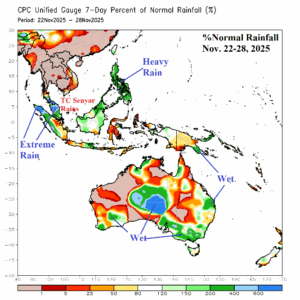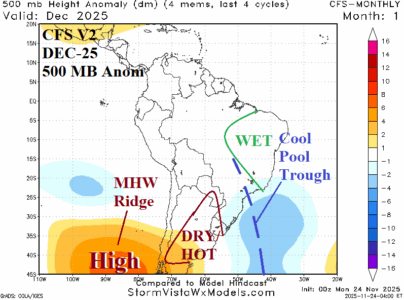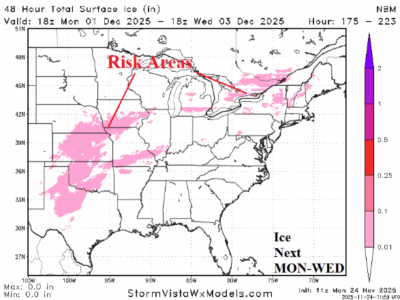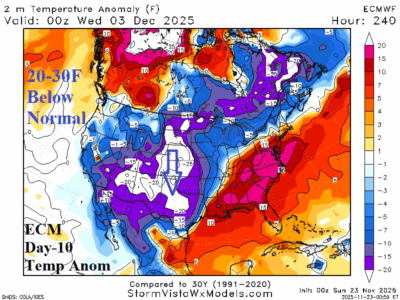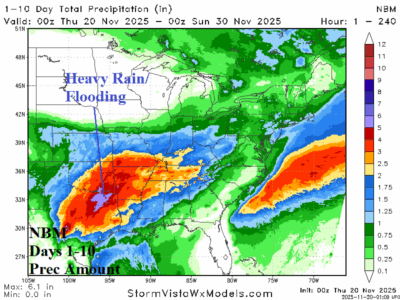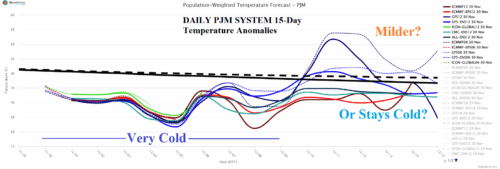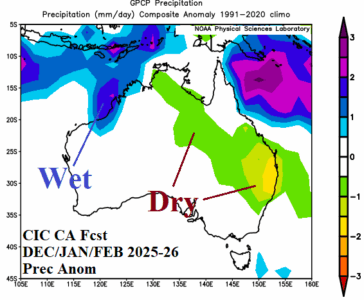Latest News
11/30/2025, 9:34 am EST
Building convection centered over the eastern tropical Indian Ocean and Maritime Continent initiated in early November, strengthened mid-November, and reached peak intensity during late November. During peak intensity, 2 unusually late season tropical cyclones formed including Senyar striking Western Indonesia and Ditmar moving into Southern India. Extreme rains caused historic flooding and mudslides killing 100’s in Western Indonesia with similar damage and fatalities confined to Southern India.
11/25/2025, 4:35 am EST
NOV-25 was mostly hotter/drier than normal across Central/Northeast Brazil while Argentina was temperate with patchy rain zones. In DEC-25, a pattern change is forecast. The catalyst to the pattern change is the influence on the upper air pattern of a marine heat wave (MHW) west of Chile and an evolving cool (SSTA) pool off the Central East Coast of South America
11/24/2025, 9:11 am EST
Using the National Blend of Models (NBM), the 48-hour snowfall valid today and tomorrow indicates potential for 5-10 inches across the northern Great Plains and Upper Midwest. The attendant storm moves towards James Bay midweek and strengthens causing heavy snow across Upper Michigan and Ontario with significant snow downwind the Great Lakes.
11/23/2025, 1:05 pm EST
Early December is trending cold to very cold, snowy (and icy) for the Great Plains and possibly Texas eastward to the Ohio Valley to northern New England. Today's midday 12Z GFS is very aggressive with this potential scenario. The widespread and southern expanse of potential snow enhances the cold and limits moderation reaching Texas. The cold is less likely to impact the East.
11/20/2025, 5:53 am EST
Excessive rainfall with flood risk is forecast for today southwest of San Antonio and in Arkansas. Excessive rainfall with flood risk returns to Texas and the southeast Great Plains SUN/MON. The NBM 10-day rainfall forecast indicates 5-7 in. of rain just north of Dallas.
Climate Impact Company Chart of the Day
Snow Cover Bias Supports Cold PJM Forecast
The building Midwest and Interior Northeast/Mid-Atlantic snow cover this week helps to enhance the cold pattern in place for PJM the next 10 days which may moderate in the 11-15-day period or possibly turn warmer than normal.
Climate Impact Company Climate Diagnostics
Surprising Drier Change Eastern Australia Latest Summer 2025-26 Outlook
The latest Climate Impact Company constructed analog climate forecast for meteorological summer 2025-26 has changed. The outlook is drier across East Australia and hotter across Southeast/South-central Australia. The anomalous heat and dryness in this region indicate expanding drought is likely.


